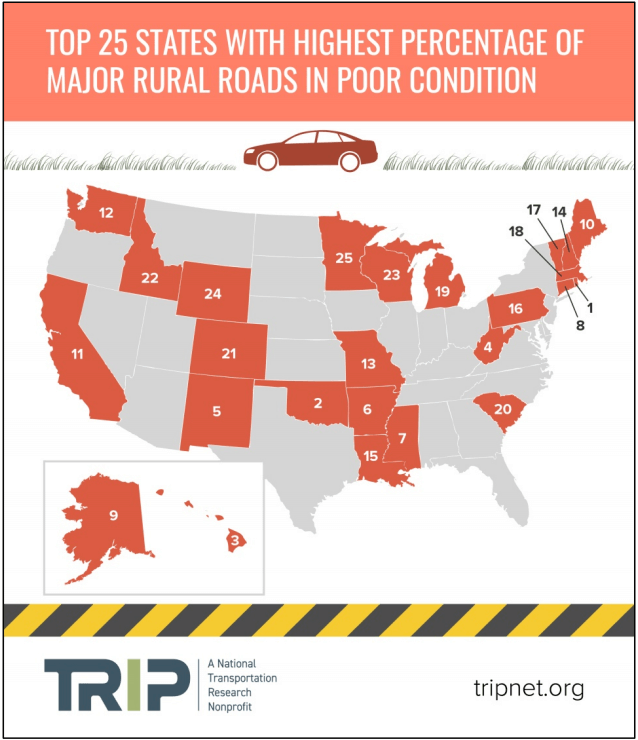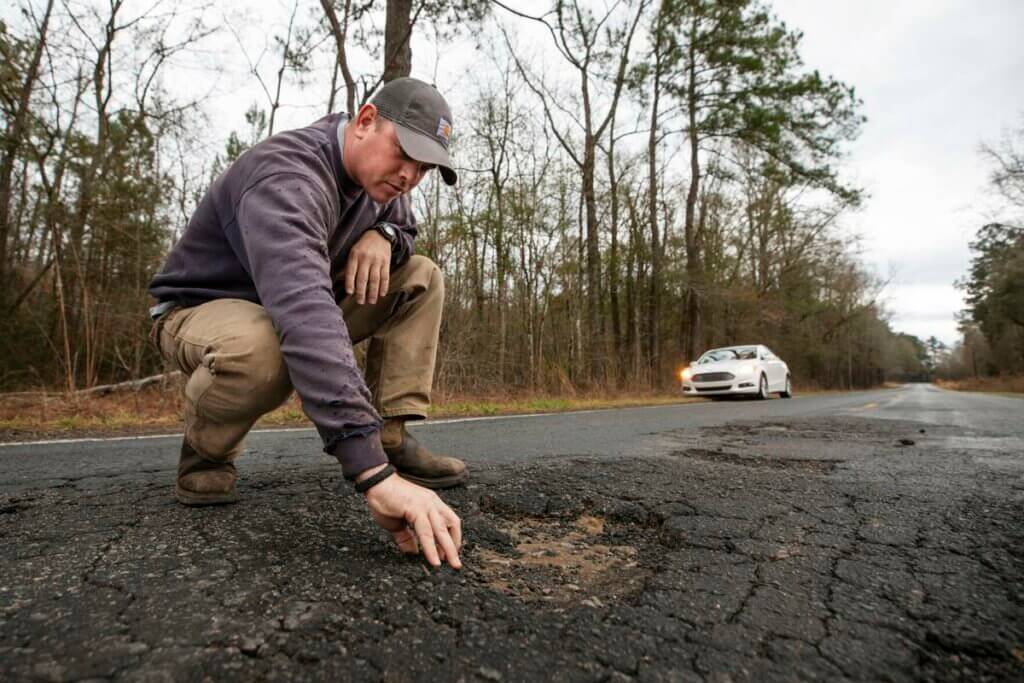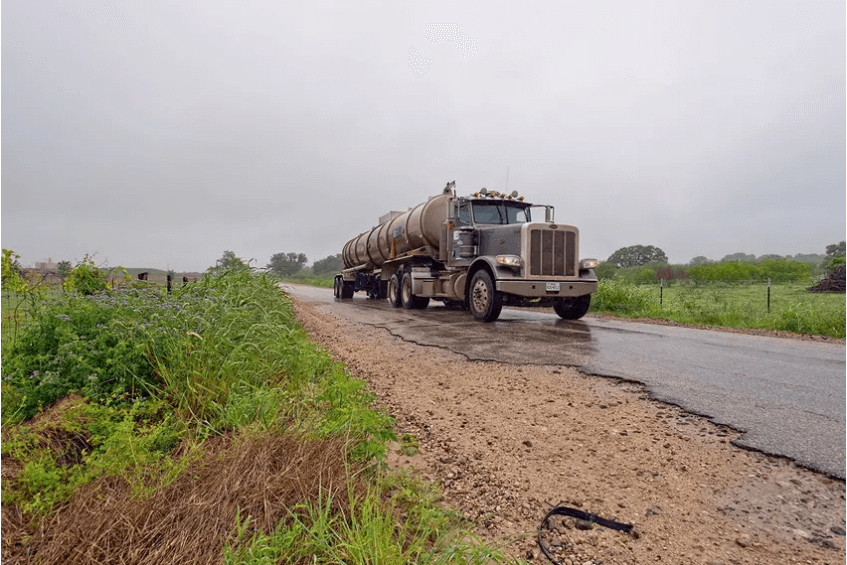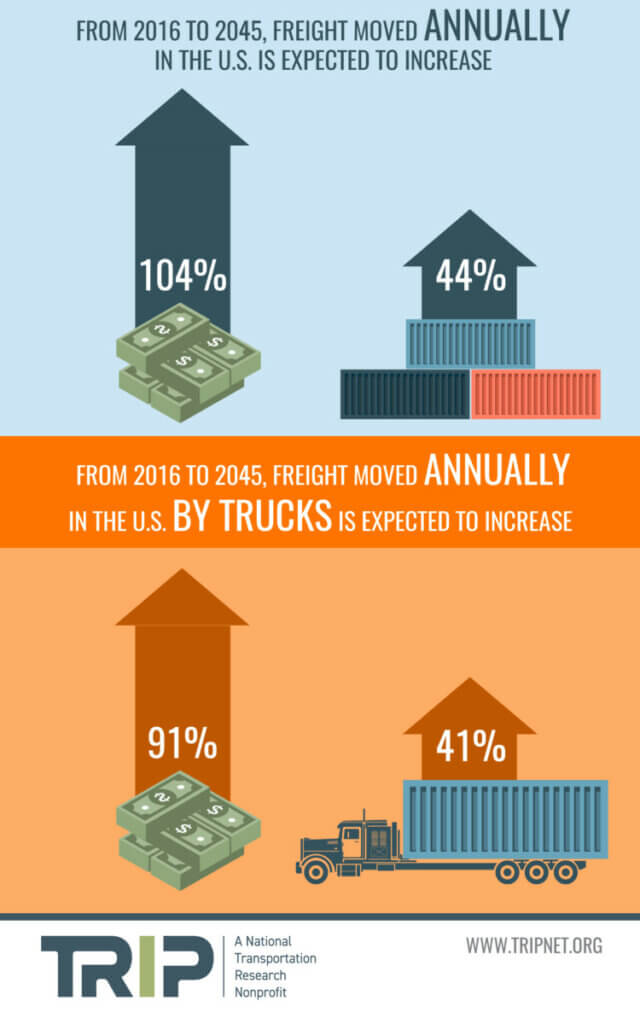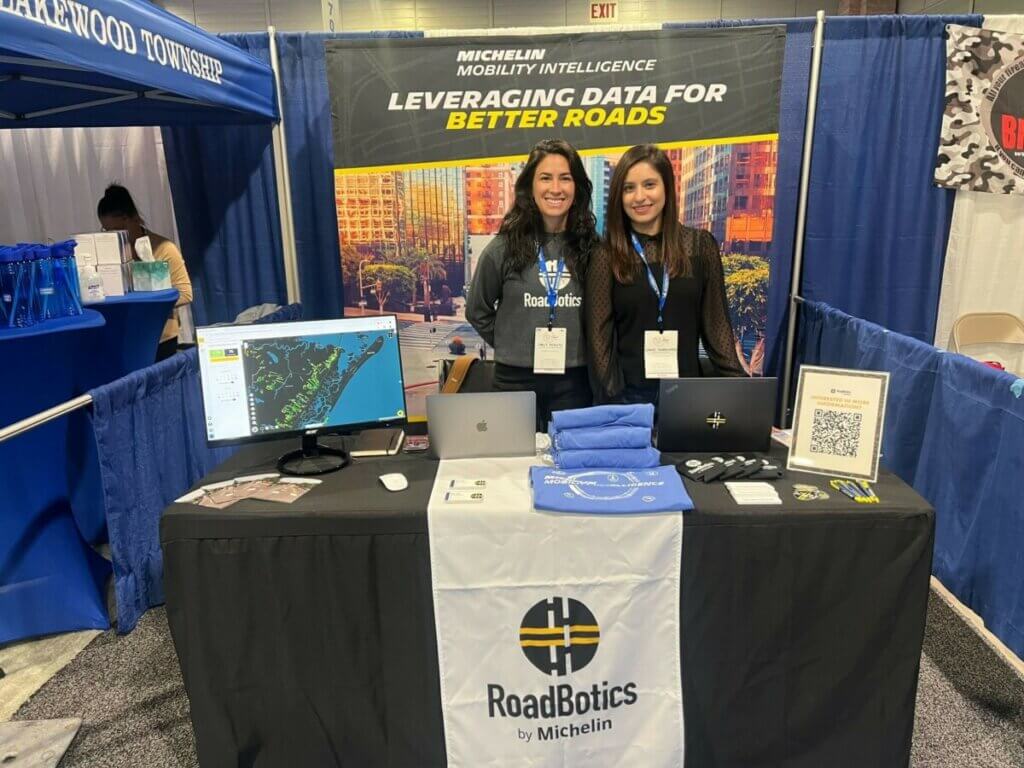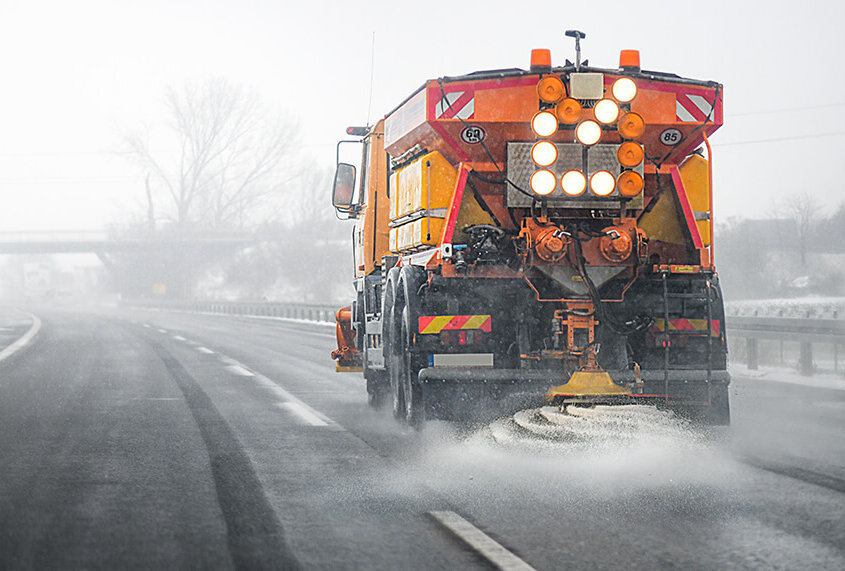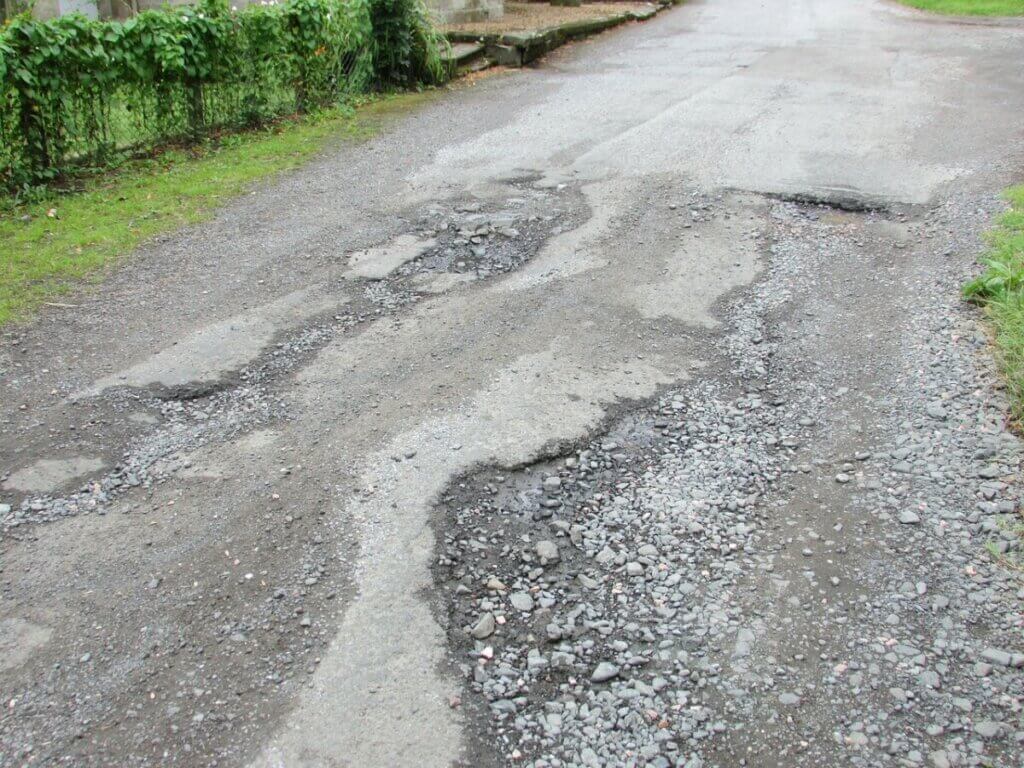Activities surrounding industries like energy and resource extraction have increased over the last decade in the United States. Their operations often target resource dense yet sparsely populated regions, and the equipment and materials needed to sustain them are being hauled on the same roads that local citizens depend on.
On the one hand, these industries bring a significant economic benefit to these communities; however, they are also detrimental to the condition of essential infrastructure – especially roads.
Most rural roads were originally built to accommodate trucks carrying produce from farm to market. Contractors could not have anticipated the unprecedented increase in industrial activities that would require moving super heavy loads of resources, equipment, and waste. That, coupled with aging pavement surfaces and inadequate funding, has caused roads in many rural communities to crumble and fail, endangering citizens, damaging vehicles, and resulting in road closures and traffic delays.
But why are trucks so detrimental to roads?
The Multiple Axles Effect
When constructing a road, engineers and contractors must first determine the estimated single axis load, or vehicle loading, that the road is expected to experience over its approximate 30-year lifespan. The estimation includes a count of the current normal and heavy vehicles and the estimated traffic growth rate over time. This information is used to determine the adequate pavement design and mixture to withstand the expected traffic.
Interestingly, the impact of vehicles on roads is not only determined by weight, but also by the number of axles. The U.S. General Accounting Office found that road damage does not increase linearly with weight, but exponentially by the power of four.
For a vehicle that carries twice as much weight per axel as a lighter vehicle, the damage to the road is not twice as much, but 2^4 or 16 times the damage as the lighter vehicle!
For example, one 18-wheeler at the U.S. maximum weight of 80,000 lbs traveling unilaterally causes the equivalent damage of 9,600 passenger vehicles weighing 4,000 lbs traveling in the same direction.
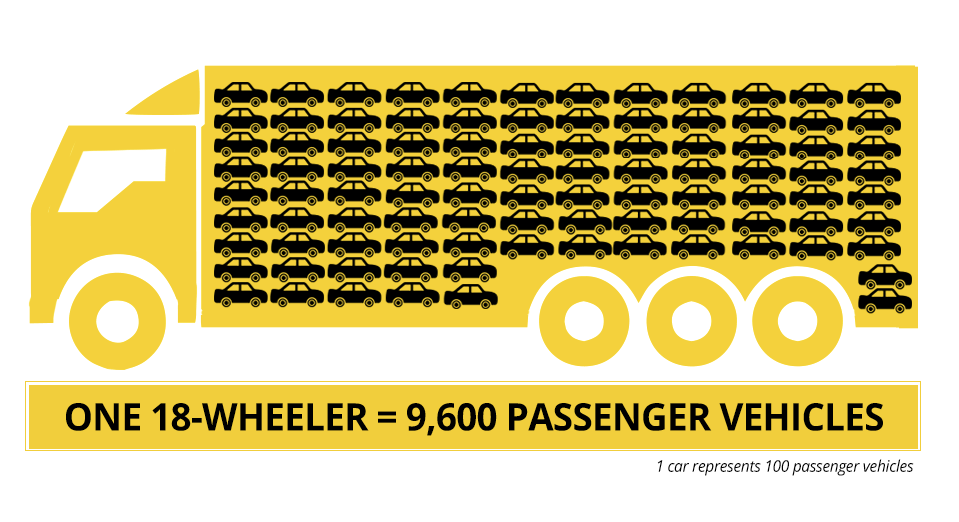
Because of this exponential effect, roads not designed to withstand heavy truck traffic are subject to potholes, cracking, rutting, and pavement distortions.
The State of Rural Roads
TRIP, a national transportation research nonprofit, released a report in May 2020 that evaluated the current condition of America’s rural roads.
Using data from 2018, the report states that “13% of the nation’s major rural roads were rated in poor condition, 21% were rated in mediocre condition, and 16% were rated in fair condition.”
In other words, half of the nation’s major rural roads are in, at best, fair condition.
Crumbling infrastructure makes vehicular travel for both passenger vehicles and large trucks very dangerous. Sadly, the TRIP report also stated that while America’s major rural roads only carried 22% of vehicle miles traveled in 2018, 40% of fatal traffic crashes occurred on those roads.
Rural infrastructure is deteriorating, and local governments are responsible for funding repairs and maintenance activities. As it stands, there is little ‘trickle-down’ funding to support that.
Big Industries in Small Towns
Poor rural road conditions are exacerbated by big industries utilizing large trucks to haul resources and waste. The residents feel the brunt of the operations in diminishing road conditions, damaged vehicles, and noise disturbances, and local government officials are faced with roads they cannot afford to fix.
Sand Mines in South Carolina
Residents of Dorchester County, SC, a region experiencing 20% of all new sand mining operations in the state, are feeling the unwanted side effects in their communities, including copious potholes, road closures, and noise. One resident had to replace two tires after hitting two potholes at once.
Residents are hoping to see stricter regulations between the local government and mine operators that cover safety inspections and road repair fees. The county has received additional funding to repair some of the worst roads affected by mining operations, but unfortunately it is not enough for the reoccurring pothole problem.
Oil and Gas in the Permian Basin
Oil and gas production in the Permian Basin, which covers 86,000 miles from Eastern New Mexico to West Texas, is responsible for producing over half of America’s oil and gas. While the country benefits from the production of domestic energy, the state receives large tax revenues, and the communities experience exponential growth, the rural roads take a beating.
For example, between 2011 and 2013, the roads in Howard County, TX, suffered $30 million worth of damage attributable to trucks traveling to and from oilfields, yet the County only received $3.5 million from the state to repair the damaged roads.
The longstanding issue in Texas is the lack of trickle-down funding from the state. The tax revenue from energy production ends up in three state funds, none of which support the funding of local roads. Additionally, recent grant and multi-year road repair funding projects are focused on fixing interstates, not local roads.
Coal Mining in Appalachia
Coal mining’s detrimental effect on the environment and public health is so well documented that its effect on the condition of local roads barely rises to the surface of concern.
However, four of the Appalachian states where mountaintop mining is prevalent are on TRIP’s list for the top 25 states with the highest percentage of major rural roads in poor condition – West Virginia, Mississippi, Pennsylvania, and South Carolina.
In recent years, lobbyists in West Virginia and Kentucky have succeeded in passing state legislation that permits coal trucks to haul over 150% of the country’s weight limit of 80,000 pounds. Lobbyists claim that by carrying heavier loads, there will be fewer trucks on that road. That may be true, but for trucks traveling on state and rural roads that cannot withstand 80,000-pound loads, the pavement will only deteriorate faster by carrying heavier loads.
Truck Freight Transportation Across the U.S.
Along with big energy and resource extraction industries, it would be remiss to not mention the effect of truck freight transportation on rural roads.
Between 2016 and 2046, TRIP predicts a 44% increase in annual freight moved in the U.S., with trucks carrying 41% of that increase.
According to the U.S. Department of Transportation, 47% of vehicle miles traveled by trucks occur in rural areas. As the demand for resources increases over the next few decades, the lionshare of truck loading will fall to rural areas, further increasing already deteriorating roads.
Taking Action
Instead of waiting for trickle-down funding from the state (which may or may not come), the City of Andrews, West Texas, took matters into their own hands.
Concerned by the damage caused by trucks traveling on the congested 13-mile Ring Road, city officials decided to complete a pavement assessment to determine and document the road’s condition.
Andrews brought on civil engineering firm Kimley Horn, and they utilized RoadBotics’s AI-based automated pavement assessment technology to complete the small-scale special project. While most of the ring road is in good condition, the assessment will allow DOT officials to pinpoint the precise areas the trucks are causing the most damage to the road.
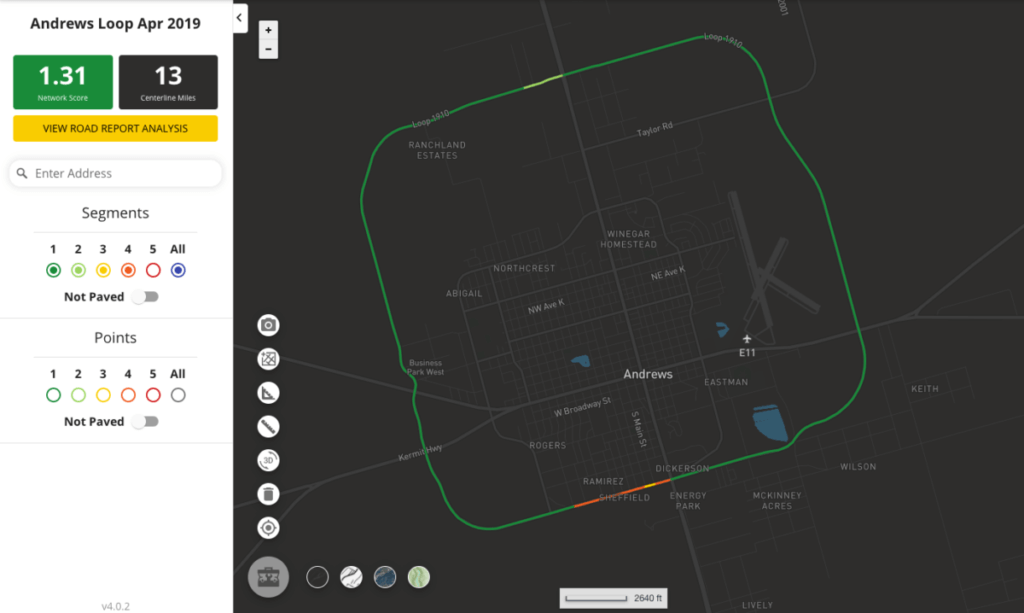
Big industry can have a big impact on small towns – some positive and some negative. Local governments can try to negotiate for a stricter code of standards in the residents’ best interest, including regulations for stricter weight limits, less noise disturbances, more safety measures, and increased road repair funding.
When that is not possible, tools like RoadBotics technology can be used to assess and monitor the roads’ condition over time to budget or provide supporting evidence for repair and maintenance funding.

